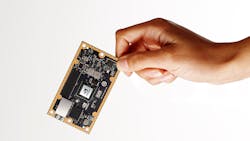Over the last decade, Jensen Huang has been trying to transform Nvidia, the company he founded and leads as chief executive. He points out that the company’s graphics chips are no longer only for enhancing the realism of computer games. He contends that the company’s future is in supplying chips that can support machine learning in data centers, cars and robots.
But the importance of the Santa Clara, California-based company’s gaming business was underlined in its latest earnings report. Nvidia reported revenues of $3.18 billion in the fiscal third quarter, growing from $2.64 billion over the last year, with gaming accounting for more than 55 percent. The company forecast lackluster revenue for the fiscal fourth quarter because of excess gaming inventory out in the market.
Nvidia expects revenue in the fourth quarter to be between $2.65 billion to $2.75 billion, clashing with Wall Street estimates of $3.4 billion. The company will suspend production of some parts in the fourth quarter to give the market time to correct. Nvidia, the largest supplier of graphics chips ahead of Advanced Micro Devices, pulled in about $2.9 billion of revenue in last year’s fourth quarter.
“Our fourth quarter outlook is impacted by excess channel inventory of midrange Pascal parts,” said Collette Kress, Nvidia’s chief financial officer, in a statement. “We believe this is a near-term issue that will be corrected in one or two quarters, and remain confident in our competitive position and market opportunities.” Nvidia was holding onto $1.42 billion of inventory at the end of the third quarter, up from $1.09 billion in the second.
The market for gaming chips based on Nvidia’s Pascal architecture started soaring last year, leading to widespread shortages. That was because they could be used to accelerate the code behind Ether, Bitcoin and other digital currencies. But the recent selloff of cryptocurrencies led to Nvidia's Pascal sales tapering off. The company needs to sell its leftover inventory before it can resume selling its latest graphics cards.
Nvidia reported $1.76 billion in gaming revenues in the third quarter, an increase of 13 percent over the last year. Stimulating sales were graphics cards based on Nvidia’s new Turing architecture, which is replacing Pascal. But the company said that last-generation Pascal chips accounted for around one-third of gaming revenue last quarter. The excess inventory should be unloaded by the end of fourth quarter, Huang said.
“We expected pricing in the marketplace to decline,” he added on Thursday’s conference call with analysts. “It declined slower than we expected, and while it was declining, we were expecting sales volume and demand to grow. I think it just took longer than we anticipated.” He added: “We decided not to sell any more for the upcoming quarter to give the market an opportunity to sell through the inventory it has.”
Even though gaming is its biggest business, Nvidia’s data center sales are booming. Revenues jumped from $501 million to $792 million over the last year, highlighting the dominance of Nvidia GPUs in training algorithms to understand voices and tell the difference between objects. The company's major customers in the cloud computing space include Google, Microsoft and Amazon.
“Artificial intelligence is advancing at an incredible pace across the world, driving record revenues for our data center platforms,” said Huang in a statement. In the third quarter, the company announced the first products based on the Turing architecture, which contains custom cores that support ray tracing technology. Those cores also handle inferencing, the act of running machine learning software trained on huge amounts of data.
On Monday, Google announced that it would be the first cloud computing company to give customers access to Nvidia’s T4 chip for inferencing over the cloud, complementing Nvidia’s V100 chip used for training. Major manufacturers, including Supermicro, Dell and Hewlett Packard Enterprise, are using Nvidia’s T4 accelerator in data center servers. “Our inference business continues to grow,” Kress said.
Nvidia’s professional visualization sales were $305 million in the third quarter, up from $239 million over the last year, while the automotive business went from $144 million to $172 million. The company had gross margins of 60.4 percent last quarter, which were unable to match the company’s forecast of 62.6 percent. Operating profit increased 18 percent over the last year to $1.06 billion. Earnings per share grew 48 percent to $1.97.
The GPU business jumped 25 percent over the last year and 4 percent over the last quarter to $2.77 billion as professional visualization, data center and gaming sales increased. Nvidia’s Tegra processor business came out of the third quarter with revenues of $407 million from chips used to enable autonomous driving and embedded machine learning. That was down 3 percent over the last year and 13 percent since the end of the second quarter.
About the Author
James Morra
Senior Editor
James Morra is the senior editor for Electronic Design, covering the semiconductor industry and new technology trends, with a focus on power electronics and power management. He also reports on the business behind electrical engineering, including the electronics supply chain. He joined Electronic Design in 2015 and is based in Chicago, Illinois.

